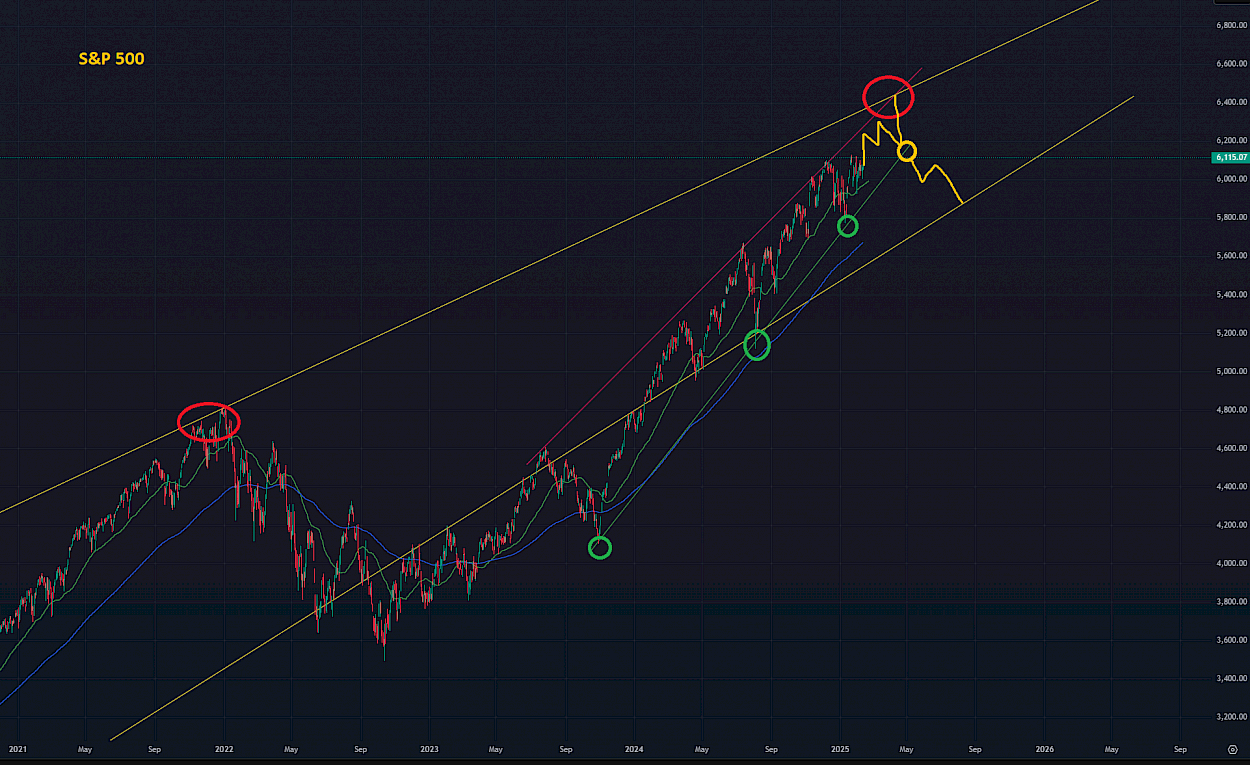



Trump in Office: Tariffs and Their Impact
History repeats itself – Trump is back, tariffs are back. In the short term, this may seem like a shock to the markets, but if there's one thing we know, it's that investors have short memories. Despite all the panic headlines about trade wars in the past, markets marched to new highs. And now? A storm may be coming, but in the long run, it is clear that the U.S. can benefit from this strategy.
Inflation remains the number one scare. But why? Tariffs can push prices higher, that’s true, but historically, they haven’t been the main culprit. The real issue is national debt, which ballooned to absurd levels during the pandemic. Cheap money was handed out like candy at a Christmas party, and now the bill is due. Refinancing at current rates? That’s like paying off a credit card with a 25% interest rate – unsustainable in the long run.
Trade wars, tariff barriers, Twitter outbursts – we’ve seen it all before. But markets don’t operate on emotions (at least not in the long run). Looking back, Trump’s first administration was full of noise, but also record market highs. History suggests that we shouldn’t panic but rather focus on fundamentals.
Consumer Price Index (CPI): January’s increase of 0.5% suggests inflationary pressures remain.
Producer Price Index (PPI): A 0.4% year-on-year increase indicates input costs for businesses are not decreasing.
Although these figures may not look ideal, markets have remained relatively stable. Perhaps because investors anticipate that the Fed will have no choice but to lower rates eventually.
At first glance, higher inflation should send markets down. But that hasn’t happened. Why?
Inflation data was largely anticipated.
Some inflation components, like healthcare services, are even declining.
The DOGE program under Elon Musk’s supervision is pushing for reduced government spending, which may calm markets, but at the same time, could mean less support for sectors that were accustomed to Biden administration subsidies. This results in short-term repositioning of investments from major market players and could mean short-term volatility.
Additionally, there are signs that Trump and Putin will negotiate an end to the war. However, we don’t believe these negotiations will bring significant breakthroughs. Europe and Ukraine will not want talks to proceed without them, potentially leading to some form of boycott. And as history tells us, “about us, without us” is nothing new in the Czech Republic – we know the consequences well. If negotiations stall, it could lead to further conflict escalation and possibly a larger trade war between the U.S. and the EU than we currently expect. These are just hypotheses, but it's important to analyze such scenarios to be prepared.
The S&P 500 has become a barometer of market sentiment, and we are closely monitoring its technical indicators. Current analyses suggest the possibility of the index rising to levels of 6,300-6,450 points and an overall movement in the range of 5,800-6,450 points. A scenario of reaching 6450 would require a short-term easing of inflation and the presence of catalysts such as concrete negotiations to end the war in Ukraine. However, we believe that even if these levels are reached, it would only be a local high. Furthermore, it will depend if we stay within the so-called Rising Wedge (red and green lines), which is a triangle formation formed by diagonal supports and resistances, where a break of one of these lines implies a more significant move.
Some banks, including JPMorgan, predict that over the next few years, the average annual return of the S&P 500 will hover around 3%. This wouldn’t be unusual, given that we have experienced more than a decade of uninterrupted growth fueled by cheap money. However, signs of an impending correction cannot be ignored – and it would actually be a healthy one. Nevertheless, current momentum could last for several more years. That’s why it’s crucial to monitor market indicators and be prepared for various scenarios.

We also considered the possibility that the U.S. dollar may need to weaken to prevent a large-scale sell-off of U.S. debt, particularly from Japan, which is struggling with a significant currency devaluation. The falling yen is causing increased inflation in Japan, which may lead to further interventions by the Bank of Japan, potentially affecting global markets. However, we are facing a contradiction – Trump’s protectionist policies could strengthen the dollar. We will see how this situation develops.
What are we doing about it?
Hedging Against Volatility: We hold VIX contracts because a calm period is an illusion.
We Believe in Bonds: High rates are unsustainable in the long run. Bonds currently look like an opportunity, because once rates fall (and we believe they will), it will be a win.
Inflation Doesn’t Scare Us: High rates are reducing demand and limiting growth. Sooner or later, the Fed will have to pivot.
There are arguments that lower rates will help stocks. Theoretically, yes, but in an environment where corporate earnings are declining due to high debt levels and government spending is being cut, it’s not that simple. Moreover, with Musk leading DOGE (not the cryptocurrency, but the program for more efficient government spending), we could see unexpected market effects. And that’s a scenario we are preparing for.
Trump, tariffs, inflation, debt, Musk, and DOGE – a mix that can bring volatility but also opportunities. Markets always move in cycles, and we are ready for the next one. In the long run, we believe that debt levels in the current environment are unsustainable and that rates will have to come down. And when that moment arrives, our positions will take the lead.
Note: This article is for informational purposes only and does not constitute investment advice. Investing in financial markets involves risks, and conducting independent analysis before making investment decisions is crucial.